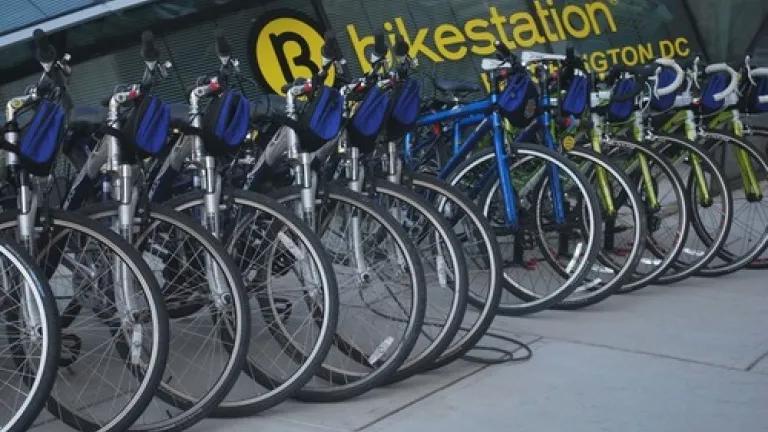
Bikes parked outside Union Station in Washington, D.C.
The following is a guest post by Janie Nham:
It is clear that active transportation modes like bicycling and walking have gained momentum in the past several years. Yet even as acceptance of bicycling and walking as everyday transportation options spreads, the amount of standardized and accurate data necessary to support their growth still remains limited.
There are a few surveys that attempt to measure bicycling rates, with perhaps the most well-known among them being the American Community Survey (ACS) and the National Household Travel Survey (NHTS). These surveys are meaningful, but fall short of providing an accurate snapshot of biking and walking levels in the US. The ACS, for example, only captures trips made for work purposes. Trips made for non-work purposes (like biking to the grocery store) or in combination with other modes (such as a connection to/from transit) are not accounted for. This lack of comprehensive data suggests a strong likelihood that the popularity of biking and walking as transportation modes is understated. This uncertainty very likely results in sub-optimal attention to and funding of active transportation programs and infrastructure, which would be insufficient to meet true need and demand.
In contrast, the Federal Highway Administration’s NHTS includes trip purpose, offering a more comprehensive report on travel behavior. Unfortunately, the NHTS is administered about once every decade, and the last NHTS from 2009 had a response rate of just 20%. This creates serious questions about the accuracy of NHTS results and its relevancy to current urban planning decisions.
Relying on distorted information can also have implications for an existing program’s success. For active transportation programs that have already been implemented, biking and walking rates are critical program measures that enable feedback about an initiative’s success. When that feedback data is incomplete or inaccurate, it can generate misperceptions about a program’s development, and in a worse-case scenario, cause policy makers to prematurely claim that a program is unsuccessful. Incomplete feedback data also distorts the program’s progress and prevents effective mid-cycle policy modifications that can improve the initiative’s chances for success. And the premature failure of a program itself could have repercussions. Beyond the lost benefit to bike riders and pedestrians, the failure of a program due to inaccurate data can lead to the erroneous elimination of the initiative as an effective policy tool for future use.
Finally, understanding the purpose of individual trips enables decision-makers to tailor the design of programs to best meet citizen needs. Without knowing the reasons for biking and walking trips, policy analysts and planners are left in the dark about the true needs and preferences of cyclists and pedestrians.
The nature of bicycling and walking is such that the benefits of a single person participating in those transportation modes accrue to the larger community, in addition to the cyclist or pedestrian herself. Beyond the health benefits received by the individual, active transportation also yields environmental and social benefits to the community. For this reason, it is critical that interest in these modes is accurately reflected in data so that decision-makers can appropriately allocate resources. Without reliable evidence to support interest in biking and walking, it’s not just the bicyclists and pedestrians who lose, but we all do.
Janie Nham is a sustainability advocate in Washington, DC. This past year, she served as the Washington Area Bicyclist Association’s Policy Fellow and as a citizen advisor to the National Capital Transportation Planning Board.
